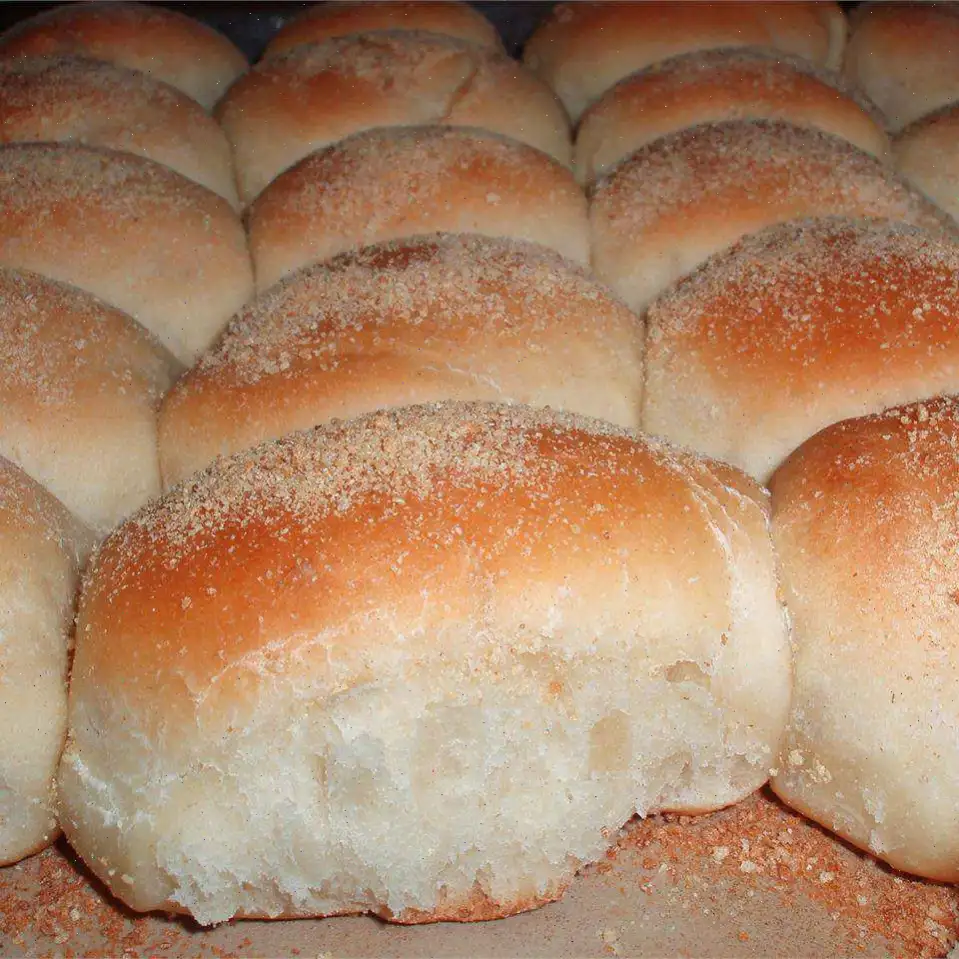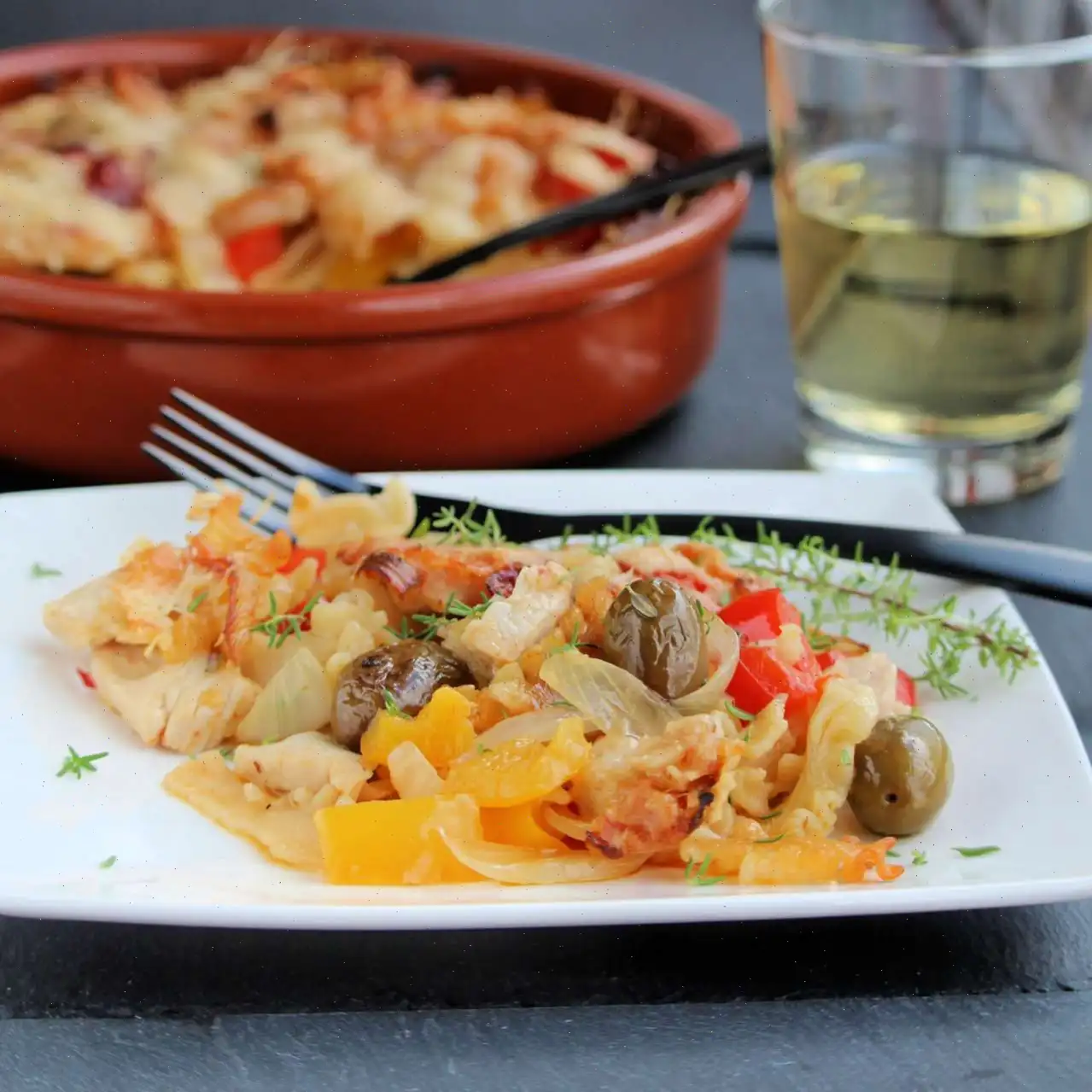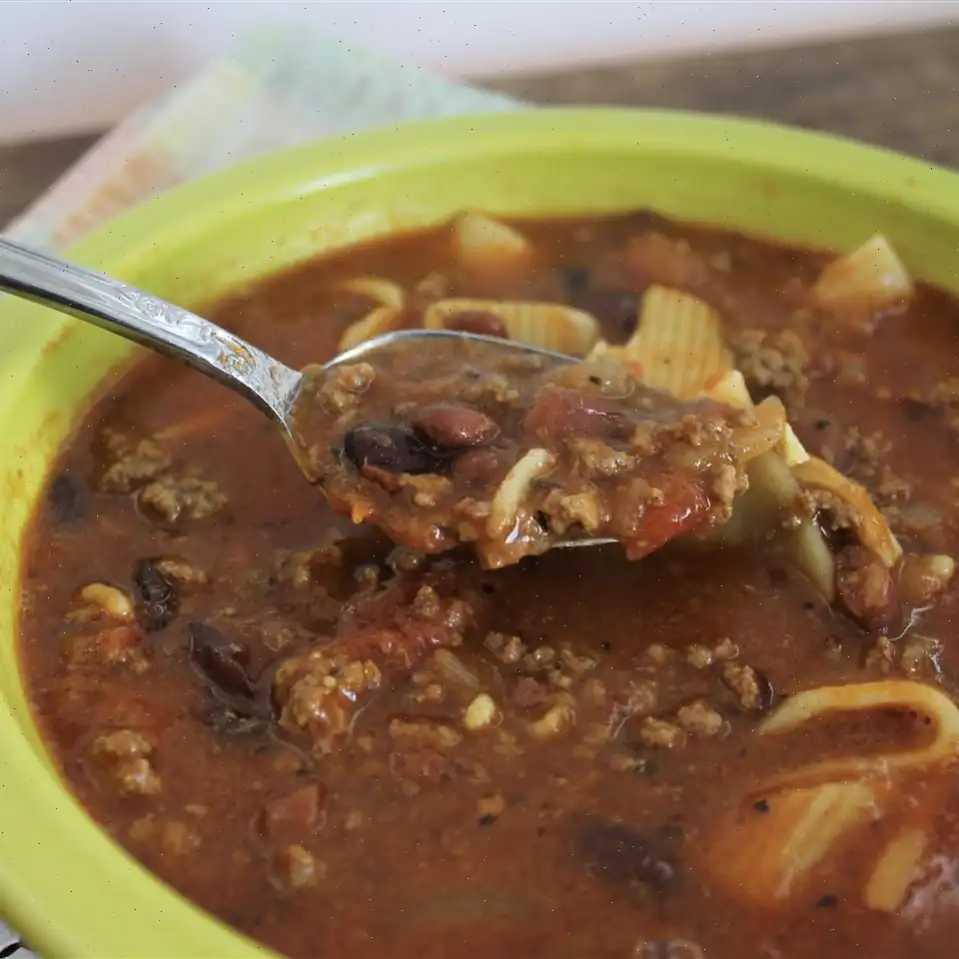
Pan De Sal I Recipe
Ingredients
This recipe was developed at its original yield. Ingredient amounts are automatically adjusted, but cooking times and steps remain unchanged. Note that not all recipes scale perfectly.
- 2 cups warm water (110F / 45C)
- 2 teaspoons active dry yeast
- cup white sugar
- cup vegetable oil
- 1 teaspoons salt
- 6 cups all-purpose flour
Directions
Step 1: In a small mixing bowl, combine the warm water with the yeast and 1 teaspoon of sugar. Stir to dissolve and let it sit for about 10 minutes until it becomes creamy.
Step 2: In a large mixing bowl, combine the remaining sugar (15 teaspoons) and vegetable oil. Mix well until smooth.
Step 3: Add the salt, 1 cup of flour, and the yeast mixture to the large bowl. Stir until combined.
Step 4: Gradually add the remaining 5 cups of flour, cup at a time, mixing after each addition. Keep adding until the dough starts to pull away from the sides of the bowl.
Step 5: Turn the dough out onto a lightly floured surface and knead for about 10 minutes until smooth, supple, and elastic.
Step 6: Lightly oil a large mixing bowl. Place the dough inside, turning it once to coat with oil. Cover with a damp cloth or plastic wrap and set aside in a warm place. Let it rise for about 1 hour, or until the dough has doubled in size.
Step 7: Once the dough has risen, turn it out onto a floured surface. Divide it into 4 equal pieces.
Step 8: Roll each piece into a cylinder shape, and then roll each 'log' until it reaches about inch in diameter.
Step 9: Use a sharp knife to cut each 'log' into inch pieces. Place the pieces flat side down onto two lightly greased baking sheets.
Step 10: Gently press each roll to flatten slightly.
Step 11: Preheat your oven to 375F (190C).
Step 12: Cover the rolls with a damp cloth and allow them to rise for another 30 minutes, or until they have doubled in size.
Step 13: Bake the rolls in the preheated oven for about 20 minutes, or until golden brown.
Nutrition Facts (per serving)
Servings Per Recipe: 20
- Calories: 175
- Total Fat: 3g (4% Daily Value)
- Saturated Fat: 0g (2% Daily Value)
- Sodium: 176mg (8% Daily Value)
- Total Carbohydrate: 32g (12% Daily Value)
- Dietary Fiber: 1g (4% Daily Value)
- Total Sugars: 3g
- Protein: 4g (8% Daily Value)
- Calcium: 7mg (1% Daily Value)
- Iron: 2mg (10% Daily Value)
- Potassium: 49mg (1% Daily Value)
Percent Daily Values are based on a 2,000 calorie diet. Your daily values may be higher or lower depending on your calorie needs.
Pan De Sal, meaning "bread of salt" in Spanish, is a beloved Filipino bread roll often enjoyed for breakfast or as a snack. This soft, slightly sweet, and mildly salty roll has a crunchy crust and a fluffy, airy interior, making it a perfect accompaniment to various spreads or served alongside hot beverages like coffee or hot chocolate.
Origin and History
Pan De Sal's origins trace back to the Spanish colonial era in the Philippines. The name itself reflects the Spanish influence on Filipino cuisine. "Pan de sal" translates to "bread of salt," which is somewhat of a misnomer, as the bread is more sweet than salty. Over time, the recipe evolved to include a combination of ingredients influenced by local Filipino tastes, such as sugar and flour, alongside its traditional yeast base. The bread became an essential part of Filipino life, often served fresh in the morning and available from nearly every bakery, from small neighborhood shops to larger commercial outlets.
Regional Variations
While Pan De Sal is enjoyed throughout the Philippines, regional variations exist in both the preparation and the ingredients used. In some regions, you may find variations where the dough is enriched with butter or lard, which gives the bread a richer flavor and softer texture. Additionally, Pan De Sal in certain areas is made with more sugar or even with additional fillings like cheese or sweetened coconut. In the Visayan and Mindanao regions, the bread might be slightly larger or rounder, while in Metro Manila, it's often smaller and more compact, with a distinct crumbly texture thanks to the addition of breadcrumbs on the outside.
Distinctive Features
Pan De Sal stands apart from similar bread rolls like French baguettes or Portuguese rolls due to its texture and flavor. While many rolls are designed to have a crisp, chewy texture, Pan De Sal is known for its lightness and fluffiness inside, coupled with a slightly sweet flavor. Unlike other bread, which might be more savory or plain, the addition of sugar in the dough gives it a unique contrast of flavors. Additionally, the soft bread is often rolled in breadcrumbs before baking, which gives it a signature crunchy outer layer, setting it apart from other rolls.
Where Is It Typically Served?
Pan De Sal is primarily consumed during breakfast in Filipino households, often paired with coffee, hot chocolate, or as a side to a savory spread such as butter, jam, or cheese. It's also served at family gatherings or casual get-togethers. In the Philippines, its commonly sold in local bakeries and stores in the early morning, still warm and fresh from the oven. Abroad, especially in places with Filipino communities, Pan De Sal can be found in Filipino grocery stores or bakeries, bringing a taste of home to those living outside the Philippines.
Fun Facts About Pan De Sal
- Although its name suggests a salty flavor, Pan De Sal is actually quite sweet, with sugar being one of the key ingredients in the dough.
- In the Philippines, its not uncommon to eat Pan De Sal stuffed with various fillings such as scrambled eggs, cheese, or even sausage for a savory breakfast.
- There are over 20,000 bakeries in the Philippines, and most of them make Pan De Sal, highlighting its central role in Filipino culture and daily life.
- In the early morning hours, the smell of freshly baked Pan De Sal wafts through many neighborhoods, signaling the start of a new day.
- During Christmas time, some families enjoy Pan De Sal with "queso de bola" (edam cheese), which is a holiday tradition in many Filipino homes.
Pan De Sal continues to be a staple of Filipino cuisine, cherished not only for its comforting taste but also as a symbol of Filipino tradition. Whether enjoyed on its own or paired with a hot beverage, it remains a favorite of many, both in the Philippines and among Filipino communities around the world.
You can listen to this recipe in AI audio format. Simply click the play button below to listen to the content in a format that suits you best. It’s a great way to absorb information on the go!
FAQ about Pan De Sal I Recipe
Comments
Jennifer Sanchez
01/20/2023 11:56:46 PM
Reduced the recipe by half and tested it on my bread machine's dough setting. The freshly baked batch disappeared in 60 seconds, prompting me to make a second batch without scaling down the recipe. I followed the original recipe and rolled the buns in breadcrumbs before baking. Hoping to have some left for a photo shoot next time. Thank you for sharing this wonderful recipe!
Debra Brown
03/24/2024 02:44:47 AM
My wife, who is from the Philippines, and I both love Pan De Sal, so I decided to try out this recipe with a few tweaks based on suggestions. I found that using 2/3 cup of sugar is a must, and I adjusted the salt to 2 teaspoons. The initial rise took approximately 1.5 hours, so patience is key. I let the dough sit in a warm oven, and I even had to briefly turn the oven on again to help the dough rise properly. The original recipe recommended rolling the dough into a log 1/2 inch in diameter, but I believe this was a misprint. I opted for a log around 2.5 inches in diameter and cut them into 1-inch thick slices. When placing them on the baking pan, I reshaped them into rounds, slightly flattened them, and spaced them about 1/2 inch apart. On the second pan, I placed them closer together (1/4 inch spacing) to test if it would result in taller rolls, which it did. I brushed an egg/milk wash on top of each roll and sprinkled them with fine breadcrumbs. Consulting with my wife and her Filipina friend about the traditional shape of Pan De Sal yielded different answers, likely because of regional variations in the Philippines. The first batch turned out flatter at around 1.5 inches high but still fluffy. The second batch, allowed to rise an extra 30 minutes, rose to 2 inches tall and resembled what we buy at our local Filipino bakery, similar to traditional dinner rolls in the USA. We enjoyed both styles equally.
Nathan Green
07/04/2024 09:32:25 AM
I discovered this recipe online after constantly driving a long distance to satisfy my wife's craving for pan de sal. Making this has been a game-changer for us - my wife and kids absolutely adore it, and I've already whipped it up 10 times in just 2 months, believe it or not! I took some advice from other reviews and tailored the original recipe to match our preferences and it turned out fantastic. I swapped out 1/4 cup of vegetable oil for a mix of 2 tbsp butter and 2 tbsp vegetable oil, added 4 egg yolks (without the whites), included 1 cup of sugar, 2 tsps of salt, and 1 pack (or 2 1/4 tsps) of active dry yeast. Shaping the dough into logs about the size of a large AA egg, I found that letting them rise for up to 2 hours gives a softer texture, while a shorter rise yields a denser result. For a crunchy top, I lightly brushed the logs with vegetable oil, ensuring not to overload to prevent burning. A sprinkling of breadcrumbs over the oil added an authentic touch. Though time-consuming, the effort is truly worth it, especially when seeing how much my wife enjoys these homemade pan de sal. I'm grateful for stumbling upon this recipe - a definite hit in our household. Thank you for sharing it!
Kimberly Wright
01/28/2023 06:57:29 AM
Amazing recipe! So delicious and truly authentic. I've made this recipe 5 times in the past two weeks and I never get tired of it. I adjusted the sugar amount to 2/3 cups based on previous reviewers' recommendations, and it really captured the authentic Filipino taste, although I prefer less sweetness. Reducing the sugar to 1/2 cup made it perfect for my taste. My family also loved it, especially when paired with Philadelphia cheese spread. Allowing the dough to rise for 4 hours instead of 1 hour resulted in a softer inside and crispy outside when baked. The bread crumbs added a nice touch of authenticity. Thank you for sharing this recipe; now I can enjoy pandesal anytime without having to miss it from the Philippines. And to all the reviewers, thank you for your helpful comments in making these fantastic pandesal!
Joshua Green
09/18/2024 09:41:31 PM
I frequently make these, my children adore them. I have made two adjustments - increased sugar to 2/3 cup and salt to 2 tsp. Additionally, I sprinkle breadcrumbs before baking. I enjoy adding cheese in the center when they're warm... and pairing them with hot cocoa. Delicious!
Barbara Taylor
01/18/2023 04:10:54 AM
Swapped out the water for milk.
Christopher Martinez
02/26/2024 12:38:36 PM
My Filipino husband and kids absolutely adore these. You wouldn't believe they were made by someone who isn't Filipino. I should definitely make them more frequently since they are so simple yet incredibly tasty. Delicious!
Scott Brown
05/10/2025 02:41:22 PM
I followed the recipe exactly, but the result was quite different from the authentic pandesal I've had in the past. Having visited the Philippines and tasted real pandesal, as well as enjoying my mother's amazing pandesal creations as a professional chef, this recipe fell short. It lacked flavor, needing more salt and sugar, and the proofing time was insufficient. To achieve the desired texture and taste, the dough requires at least five hours of proofing, with regular kneading intervals, for it to reach its full potential.
Dennis White
01/06/2024 07:04:10 PM
This is by far the best recipe! Making pandesal with it brings me back to the old days when I used to run to the store early in the morning to buy the freshest ones.








